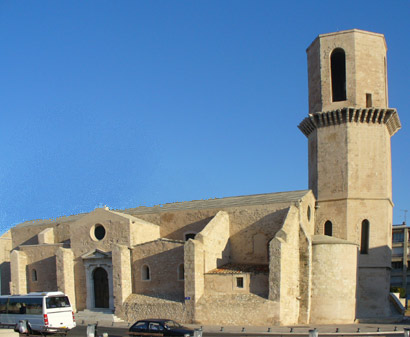 Our first stop in Marseille was at the 12th-14th c. Provençal Romanesque church of St. Laurent.
Our first stop in Marseille was at the 12th-14th c. Provençal Romanesque church of St. Laurent.

From there we could get a good view of the Major Cathedral, a 19th c. Romanesque-Byzantine structure. To its right is the Old Major Cathedral, which is 12th c. Romanesque.
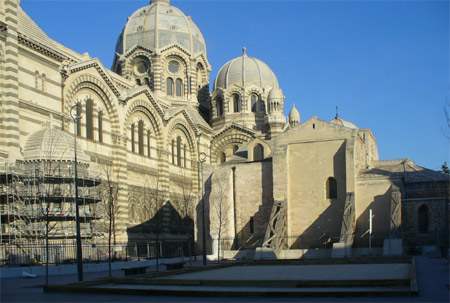 A closer view of the old church as we drove by.
A closer view of the old church as we drove by.
 A view of the Mediterranean and some of the islands nearby.
A view of the Mediterranean and some of the islands nearby.
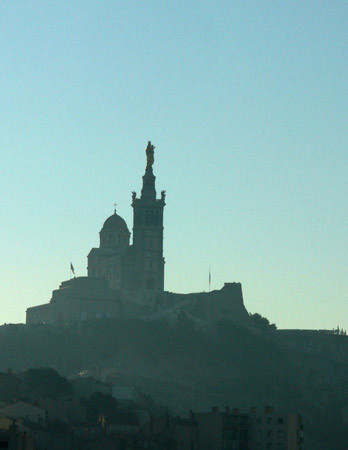
From a number of spots that morning we could see the Notre Dame de la Garde in the haze, visible across much of the city and from miles out at sea.
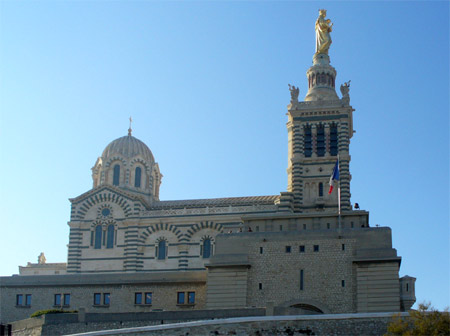 Now we have driven up the hill to see this Romanesque-Byzantine basilica, built in the 1850's on the site of a 13th century chapel, also dedicated to Our Lady of the Guard and filled with the votive tablets of sailors who returned safely to port.
Now we have driven up the hill to see this Romanesque-Byzantine basilica, built in the 1850's on the site of a 13th century chapel, also dedicated to Our Lady of the Guard and filled with the votive tablets of sailors who returned safely to port.
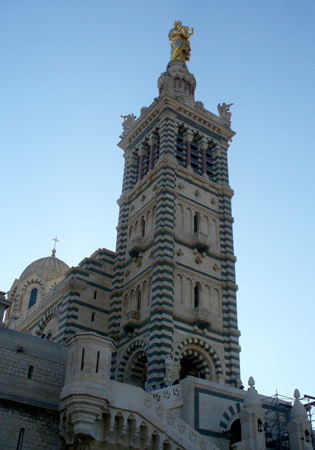


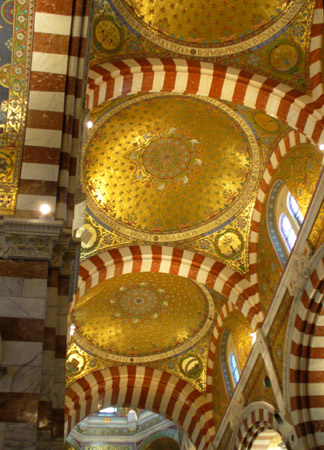
The interior is decorated with inlaid marble, mosaics and murals.

From that vantage point, we had great views of the city. At the far left we can see the St. Laurent Chapel and to its right about the middle of the photograph, the Major Cathedral. The St. Laurent Chapel is at the entrance to the Old Harbor, which we can see at the lower part of this panoramic view.
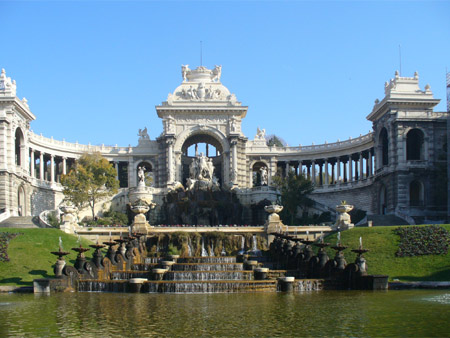
As we drove down towards the Old Harbor, our guide told us she was going to show us one of the most elaborate water towers we would ever see. In the nineteenth century, there was insufficient water for the city and so the engineers built an aqueduct to bring water from the Durance to Marseille. To celebrate the arrival, the palace was built by the architect Henri Espérandieu.
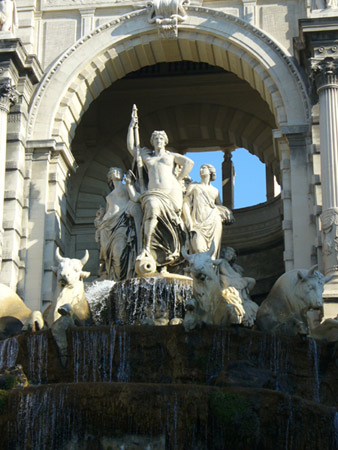 A fountain was installed above the water tank, representing several statues: an allegory of the Durance (the river), and at her side Vines and the Wheat who watch it with gratitude.
A fountain was installed above the water tank, representing several statues: an allegory of the Durance (the river), and at her side Vines and the Wheat who watch it with gratitude.
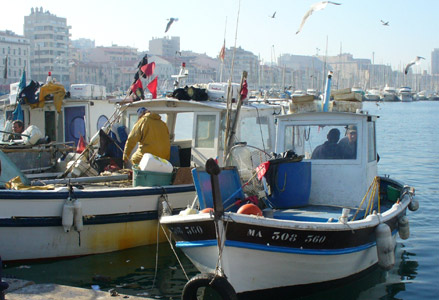



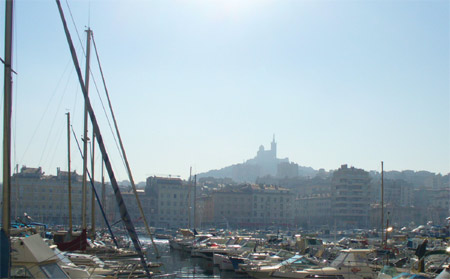
After a delightful day in Marseille, we had to leave, but we have many wonderful memories of this city.
The next day we leave for Avignon by way of a number of hill towns to Roussillon in the Vaucluse departement.
